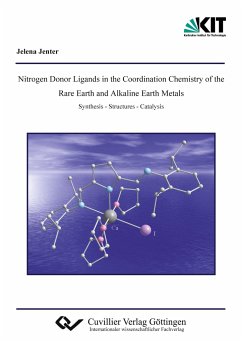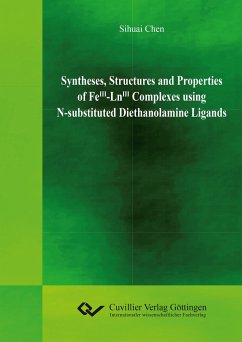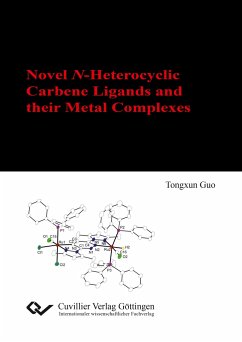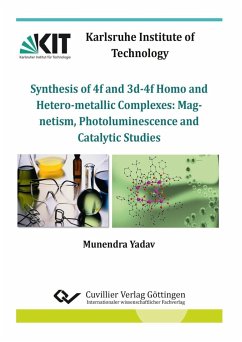
Employing Crystal Engineering Principles to Fabricate Zero to Three-Dimensional 4f-based Metal Aggregates using O-Donor Ligands

PAYBACK Punkte
0 °P sammeln!
Interest in lanthanide (Ln) coordination chemistry has increased significantly over the past few years, in particular as a result of their intriguing spectral and magnetic properties. LnIII ions are "hard acids" and generally prefer to coordinate with "hard bases" such as O- and F-donor ligands. Their coordination geometries are usually determined by ligand steric factors rather than crystal field effects. The research described in this dissertation mainly focuses on the interaction of LnIII ions with O-donor ligands such as carboxylates and polyols, while aiming to synthesize Ln-based polynuc...
Interest in lanthanide (Ln) coordination chemistry has increased significantly over the past few years, in particular as a result of their intriguing spectral and magnetic properties. LnIII ions are "hard acids" and generally prefer to coordinate with "hard bases" such as O- and F-donor ligands. Their coordination geometries are usually determined by ligand steric factors rather than crystal field effects. The research described in this dissertation mainly focuses on the interaction of LnIII ions with O-donor ligands such as carboxylates and polyols, while aiming to synthesize Ln-based polynuclear coordination compounds having interesting magnetic properties. Moreover, investigation of the influence of ligand back-bone on the magneto-structural properties of the resulting compounds was explored. Consequently some novel and efficient one-pot synthetic methodologies have been successfully developed to prepare Ln-based polynuclear clusters as well as networks of various dimensionalities, displaying exciting magnetic properties. Also correlations between structural parameters and magnetic properties have been established. The resulting compounds were characterized in detail using analytical methods like FT-IR, elemental analysis, single crystal XRD, powder XRD, and magnetic SQUID measurements.













